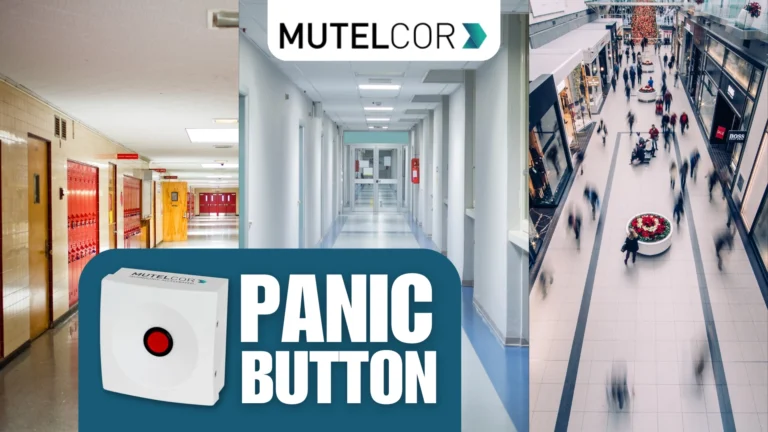
Ensuring Healthy Learning Environments with Mutelcor Smart CO2 LoRa Sensor at Aakash Institute
Ensuring Healthy Learning Environments with Mutelcor Smart CO2 LoRa Sensor at Aakash Institute

What is a Panic Button and Why is it Important?
Imagine being in an emergency and needing help immediately. A panic button is a simple device designed for that exact moment. With just one press, it sends a signal to alert someone—whether it’s security, emergency services, or loved ones—that you need assistance. It’s fast, easy, safe and can be a lifesaver in critical situations.
Different Types of Panic Buttons
Not all panic buttons are the same. Let’s explore some common types:
- Wired Panic Button:
These are connected directly to a system via wires. They are reliable and often found in banks, offices, and hospitals where consistent connection is crucial but needs regular maintenance which could be a challenge. - Wireless Panic Button:
No messy wires! These use normal AA Alkaline Batteries and radio-frequency to send alerts. They’re perfect for homes, schools, Shopping Malls, Hospitals, Hotels, Industry and places where flexibility in installation is needed. - Wearable Panic Button:
Disguised as bracelets, pendants, or keychains, these buttons are easy to carry around. Ideal for seniors, children, or individuals working in isolated areas. - Mobile App-Based Panic Button:
With technology advancing, panic button is now integrated into smartphone apps. They can send alerts with your GPS location to family, friends, or emergency services.
Special Mention: LoRa Wireless Panic Button
LoRa (short for Long Range) wireless panic buttons are a game-changer in the world of emergency communication. Unlike regular wireless systems, LoRa uses low power while covering a vast distance—up to several kilometers!
Why LoRa Panic Buttons Stand Out:
- Long-Range Coverage: Ideal for large areas like schools, hospitals, and industrial sites.
- Low Power Consumption: These devices can operate for years on a single battery.
- Reliable Signal Strength: They work even in areas with poor internet or cell reception.
Whether it’s a sprawling factory or a remote community, LoRa panic buttons ensure help is always within reach.
Use Cases for Panic Buttons
Panic Buttons are versatile and can be used in various scenarios:
- Personal Safety:
For individuals walking alone at night or in unsafe areas, wearable or mobile panic buttons provide a quick way to alert authorities or family members. - Workplace Emergencies:
Offices, banks, and retail stores use panic buttons during robberies or medical emergencies to alert security or emergency teams instantly. - Schools and Campuses:
Teachers and staff can use panic buttons to notify authorities of any immediate threats, such as intruders or accidents, ensuring a safer environment for students. - Hospitals:
Medical staff can use panic buttons to call for assistance during emergencies, improving response time and patient care. - Elderly Care:
Seniors living alone can benefit from wearable panic buttons to call for help during falls or medical issues, offering peace of mind to their families. - Public Transportation:
Panic Buttons installed in buses and trains allow passengers or drivers to notify authorities of emergencies, enhancing safety during travel.
Final Thoughts
Panic Buttons may seem like simple devices, but their impact is profound. From enhancing personal safety to providing large-scale security, they offer peace of mind in unpredictable situations. LoRa wireless panic buttons, in particular, bring a new level of reliability and efficiency, making them a top choice for both personal and professional use.
Having a Panic Button isn’t just about safety—it’s about being prepared when every second counts.